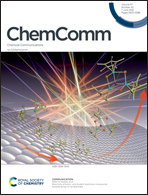A GLUT1 inhibitor-based probe significantly ameliorates the sensitivity of tumor detection and diagnostic imaging†
Abstract
We report a non-antibody GLUT1 inhibitor probe NBDQ that is 30 times more sensitive than the traditional GLUT1 transportable tracer for cancer cell imaging and Warburg effect-based tumor detection. NBDQ reveals significant advantages in terms of tumor selectivity, fluorescence stability and in vivo biocompatibility in xenograft tumor imaging, including triple-negative breast cancer.



 Please wait while we load your content...
Please wait while we load your content...